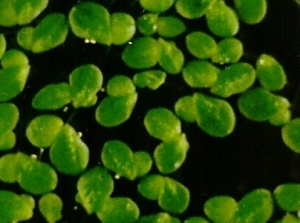 According to a new study just released in the current issue of Science, “over half a million shipments of wildlife containing >1.48 billion live animals have been imported by the United States since 2000…[and] the majority (92%) of imports were designated for commercial purposes, largely the pet trade.” Most of these imports were fish and species of coral, although all major groups of animals were imported.
According to a new study just released in the current issue of Science, “over half a million shipments of wildlife containing >1.48 billion live animals have been imported by the United States since 2000…[and] the majority (92%) of imports were designated for commercial purposes, largely the pet trade.” Most of these imports were fish and species of coral, although all major groups of animals were imported.
That is a lot of animals; roughly 4.8 animals per person in the Unites States (estimated population in US is 304,000,000 according to Google)! Unfortunately, this study also found that a large number of these shipments did not contain the proper information to determine what exactly was being imported. According to this study, almost a third of the shipments were only labeled generically, using labels like “marine fish” or “live invertebrate.” This may be cause for concern, considering most of the imported animals were from wild populations in places like Southeast Asia, which has a high threshold of emerging diseases, which may be transmissible between animals and humans.
The authors of this study, including scientists from the Wildlife Trust, Brown University, Pacific Lutheran University, the Centers for Disease Control and Prevention, and the Global Invasive Species Programme, suggest that new measures are needed to decrease the risk of new pathogen introduction and to protect not only people, but also local animals and the health of our ecosystem. Unfortunately, there is currently no national strategy, legislative authority, or funding devoted to oversight of the live wildlife trade to implement any changes, but this study recommends much more strict record keeping of imported animals, third-party surveillance of imports and testing of pathogens in imported animals, and better public education about the dangers of diseases that may be brought in to the country.
The CDC’s “Healthy Pets, Healthy People” Web site advises pet owners about zoonotic diseases associated with some wildlife, but not only do pet owners need to be more aware of what they are bringing into their homes. Pet stores, veterinarians, and animal advocates should also be more educated on the risks of imported wildlife and how possible diseases may effect their businesses.

 Hi everyone! Again, sorry for the long delay in posting…I have recently been up to my eyeballs in work! I have also started posting on the Science and Technology Community BrightHub.com. Check out some of my recent posts regarding
Hi everyone! Again, sorry for the long delay in posting…I have recently been up to my eyeballs in work! I have also started posting on the Science and Technology Community BrightHub.com. Check out some of my recent posts regarding 

